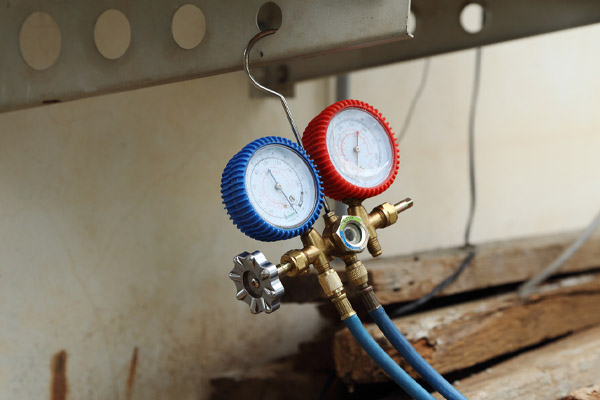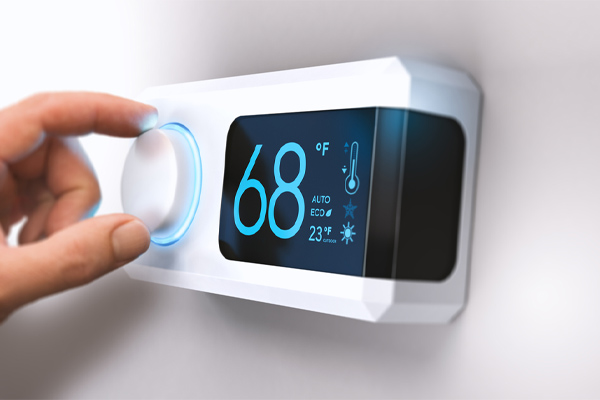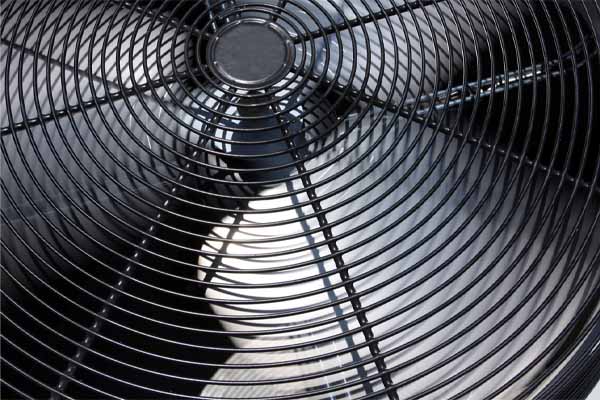
We usually turn to the air conditioner when the interior of our home grows hot and uncomfortable. We press several buttons, wait for a few minutes, and experience the cooler air. This is an amazing piece of HVAC technology that makes it infinitely easier to enjoy the very hottest of days.
Air conditioners prevent developing dangerous, heat-related issues such as heat stroke. To add, this equipment makes it possible to sleep well at night. Early civilizations would probably consider modern AC as being magical given that it allows us to control our local environment.
The truth of the matter is that it’s really just the smart application of scientific understandings. If you’ve been asking the question, “How does an air conditioner work?”, then this article will give you the answers you need.
How Your AC Cools Your Home Down
This article talks about how an air conditioner is able to keep the home at a comfortable temperature even on the hottest of summer days.
Air Conditioner Components
Before delving into the process of how an air conditioner cools your home, let’s take a little time to familiarize you with an air conditioner’s individual parts. We’ll keep it as simple as possible by focusing on the four primary components of this equipment and the jobs that they do within the cooling cycle.
1. Air Conditioner Coolant or Refrigerant

The lifeblood of any air conditioner is its refrigerant or coolant. This chemical carries heat away from the home into the outdoor surroundings. The cooling cycle describes the AC refrigerant’s journey across various components as well as the changes it undergoes throughout this journey.
2. Evaporator Coils
The evaporator coils are the primary component of the inside unit that interacts with the building interior and absorbs heat. Evaporator coils must be kept clean to ensure optimal performance. Air filters should also be replaced on a regular basis.
3. Condenser Coils
These are the primary component of the air conditioner’s outside unit. They are responsible for releasing heat. Just like evaporator coils, they are also vulnerable to build-ups of debris. Therefore, they must be cleaned from time to time. Make sure to schedule an AC tune-up for your home ahead of summer.
4. Air Conditioner Compressor
This pump moves the refrigerant from the evaporator coils to the system’s condenser coils. It is basically the heart of the air conditioning system.
An Air Conditioner’s Basic Cooling Process
1. The Thermostat Initiates Cooling

Let’s begin at the very start of the cooling process. You’ve just walked into your home after a long, hard day on the job. You turned down the air conditioner before leaving for the office so that no energy was wasted while you were gone. Now your home is hot and stuffy so you walk over to the thermostat and set the ideal temperature setting.
The ambient temperature in your home will be verified by sensors. If this temperature exceeds the temperature that you’ve set at the thermostat, a signal will be sent to initiate the cooling cycle. The system’s compressor will start up and begin moving refrigerant along its intended path. Fans will also start up.
2. Heat Is Extracted From The Inside Air By The Coolant
The first place that the refrigerant stops is the evaporator coils on the indoor component. At this time, the coolant will be cold. As it starts interacting with the air inside of your home, it will begin collecting and absorbing the heat, much like a sponge. This will cause the air to become cooler while the refrigerant heats up.
If there’s excess humidity indoors, then the vapor may become water due to lower temperatures. As such, air conditioners can also reduce humidity in your home. There’s a standby tray that collects the resulting liquid. It routes it outside so that there’s no risk of leaks or floor damage.
3. Cold Air Gets Blown Back Into The House By AC Fans

Fans blow cool air around your system’s evaporator coils and back into your living environment. With central AC, cold air is forced through the ductwork so that every room in the home is cooled.
In a multi-split system or with a window AC, fans will only blow air into the specific zone or room in which the air conditioner is installed. Multi-split air conditioners make it possible to cool specific zones down rather than air conditioning the entire building. You can turn off an individual unit in a zone or room as well, if your goal is to lower your carbon footprint.
4. Heat From The Refrigerant Is Transferred Outside
It’s not possible for refrigerant to continue absorbing heat forever. Hot refrigerant has to go to the outside unit so that heat collected from the evaporator coils can be released via the condenser coils. As long as the coolant is hotter than the air outside, it can release heat until the balance is achieved.
5. Hot Air Is Blown Outdoors By The Fans
To bring the coolant back down to a cold temperature, air is blown over the condenser coils by very powerful fans. This makes it possible for heat to be transferred into the outdoor environment at an expedited rate. The area near the outside unit will grow much hotter and you can feel as much by simply placing your hand near the top portion of this component. Given that it’s situated outside, the hot air will be blown away by the wind. Your home can continuously release hot air outside thanks to your air conditioner.
6. Cooled Refrigerant Travels Back To The Inside Unit
After the refrigerant has been cooled down, it will get pumped back to the inside unit by the compressor. This way, the entire cycle can be repeated. This process will carry on until the ambient temperature in your home matches your thermostat’s setting. Once this happens, the system will stop for a short rest. If indoor temperatures go up again while the air conditioner is on, the cooling process will be initiated once more.
Conclusion
Contrary to popular belief, air conditioners don’t actually produce cold air. Instead, they extract warm air from the home little by little until occupants are comfortable. It’s an ingenious setup that’s been quite effective for decades. New AC models are pushing the boundaries of energy efficiency so that consumers can enjoy both comfort and less energy use.
Point Bay Fuel Is Always Ready To Tackle Your HVAC Problems

For first-rate HVAC services in Ocean and Monmouth County, New Jersey call Point Bay Fuel. Our HVAC technicians are among the very best and they can perform superior repairs, tune-ups, replacements, and installations for all forms of HVAC equipment. Their experience ensures that the work will always be done on time and correctly.
When you’re looking for competitive prices on cooling and heating services, give Point Bay Fuel a call. You’ll save even more cash on heating and cooling by taking advantage of our maintenance services for assured efficiency. If you’re ready to have new heating and cooling equipment installed, we can assist you in finding the perfect model for your home, your needs, and your spending budget. Our work is always backed by a solid satisfaction guarantee. Call Point Bay Fuel right now to schedule an appointment for HVAC service.
Contact us now by calling (732) 349-5059 to speak to one of our home comfort specialists!
The post How Does An Air Conditioner Work? appeared first on Point Bay Fuel.
No comments:
Post a Comment